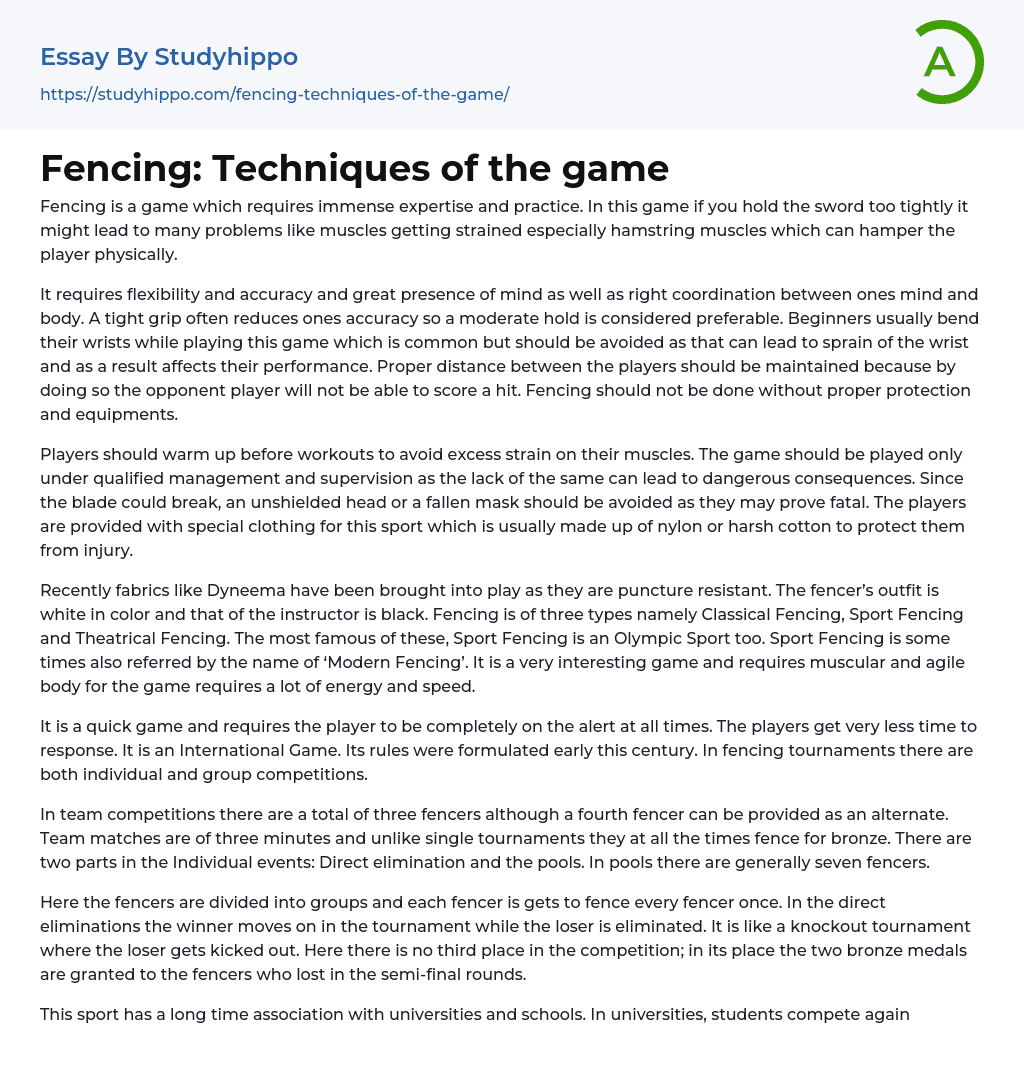Fencing requires significant expertise and preparation, as gripping the sword too firmly can lead to a range of challenges. This may include muscle tension, particularly in the hamstring muscles, which can have physical consequences for the athlete.
To be successful in fencing, a combination of flexibility and accuracy is necessary, along with the synchronization of mind and body. It's advisable to maintain a moderate hold while avoiding a tight grip that may compromise accuracy. Novices often bend their wrists during fencing, but this should be avoided to prevent injuries and poor performance. To avoid allowing an opponent to score a hit, proper distance must be maintained. Finally, protective gear and equipment are essential before attempting any fencing.
It is recommended that players warm up properly before workouts in order to prevent muscle strain. To ensure safety, the ga
...me should only be played under qualified management and supervision, as dangerous consequences could result from a lack of supervision. It is important to avoid using an unshielded head or a fallen mask while playing due to the risk of fatal injuries resulting from a broken blade. For protection against injury, players are provided with special clothing made of nylon or harsh cotton.
Fencing has evolved to include puncture-resistant materials like Dyneema for fabric options. The fencer usually wears white clothing while the instructor wears black. Fencing is divided into three categories: Classical, Sport (also known as Modern), and Theatrical. Sport fencing is the most popular category and even an Olympic sport. Due to its high-energy and high-speed nature, this thrilling game requires a strong and agile body.
Fencing tournaments include both individual and group competitions, an
the game demands constant alertness as players have very little response time. This International Game has rules that were established in the early 1900s.
Team competitions consist of three fencers, with the option of a fourth as an alternate. Matches last three minutes and always have a bronze medal bout. Individual events have two segments: pools, where usually seven fencers participate, and direct elimination.
Throughout the tournament, fencers are arranged into groups and compete against each other once. In direct elimination rounds, the victor progresses while the defeated individual is eliminated, creating a format resembling that of a knockout competition. This contest does not include a third-place finisher; rather, bronze medals are awarded to those who lose in the semi-finals.
The sport has a significant historical link with universities and schools, as their students take part in global competitions such as the World University Games.
- Fight club essays
- Training essays
- Athletic Shoe essays
- Gym essays
- Yoga essays
- Baseball essays
- Basketball essays
- Bodybuilding essays
- Boxing essays
- Football essays
- Golf essays
- Martial Arts essays
- Soccer essays
- Tennis essays
- Volleyball essays
- badminton essays
- cricket essays
- go kart essays
- hockey essays
- scuba diving essays
- snowboarding essays
- wrestling essays
- Surfing essays
- Swimming essays
- Table tennis essays
- Athletes essays
- Running essays
- Ski essays
- American Football essays
- Super Bowl essays
- Taekwondo essays
- Olympic Games essays
- Motorcycle essays
- Benefits of Exercise essays
- Sportsmanship essays
- Virtual Reality essays
- Major League Baseball essays
- Catcher essays
- Jackie Robinson essays
- Kobe Bryant essays
- Anabolic Steroid essays
- The New Yorker essays
- National Football League essays
- Mixed Martial Arts essays
- Gambling essays
- Games essays
- Beach essays
- Birthday essays
- Christmas essays
- Halloween essays




